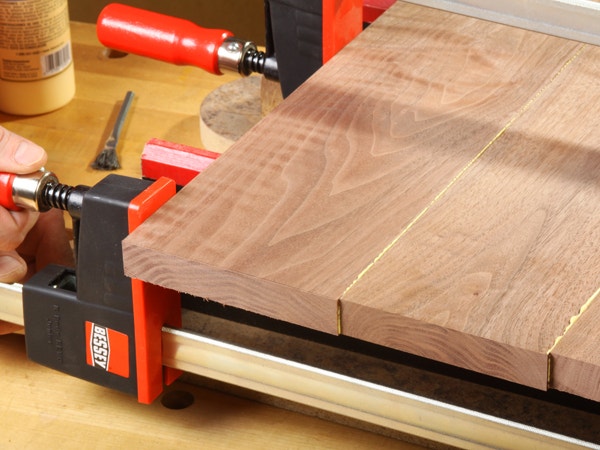How to Make a More Durable Glued Panel?
In joining two or more types of hardwoods to form a flat surface, such as a table top or a cutting board, what characteristics of the woods do I need to attend to in assuring the greatest structural integrity of the project over time? - Ken Mitchell
Tim Inman: Put these two things on top of your list of considerations: Cupping grain direction and width of the boards. It is often recommended to reverse the grain cupping direction from board to board to minimize the overall warping or curving tendency of the wood. More importantly, though, for stability, is to make sure your boards are no more than about 4 inches wide. This will maximize the stability effects of a glue-up. Narrower is better.
Chris Marshall: The issue of alternating the growth rings on panels is one of those often-debated topics. I've done it both ways — alternating the way the growth rings face or just letting the look of the face grain take priority over everything. Honestly, either approach has worked fine for me, so I tend to prioritize the look of the face grain over growth ring direction. But, I do try to keep the width of each board in a panel fairly narrow to minimize any tendency to cup.
Next on your list of considerations is the adhesive you choose for gluing those boards together. Remember, if you're gluing up a cutting board or a panel for an outdoor project, use a waterproof adhesive. A waterproof PVA glue such as Titebond III, polyurethane glue or epoxy are all good choices. For indoor projects that aren't exposed to the elements or regular water exposure, any wood glue will do.
Many woodworkers are fans of using biscuits, floating tenons, splines or dowels to reinforce edge-glued butt joints. I can see the virtue of doing that when you are gluing up really huge panels, like a dining table top. In those situations, biscuits or the like can aid in alignment so boards won't slip out of position when you clamp them tight. But, alignment aids aren't essential for joint strength — a good glue joint is all you really need. And on smaller panels, glue alone is all I ever use.
Keep the inspiration coming!
Subscribe to our newsletter for more woodworking tips and tricks




